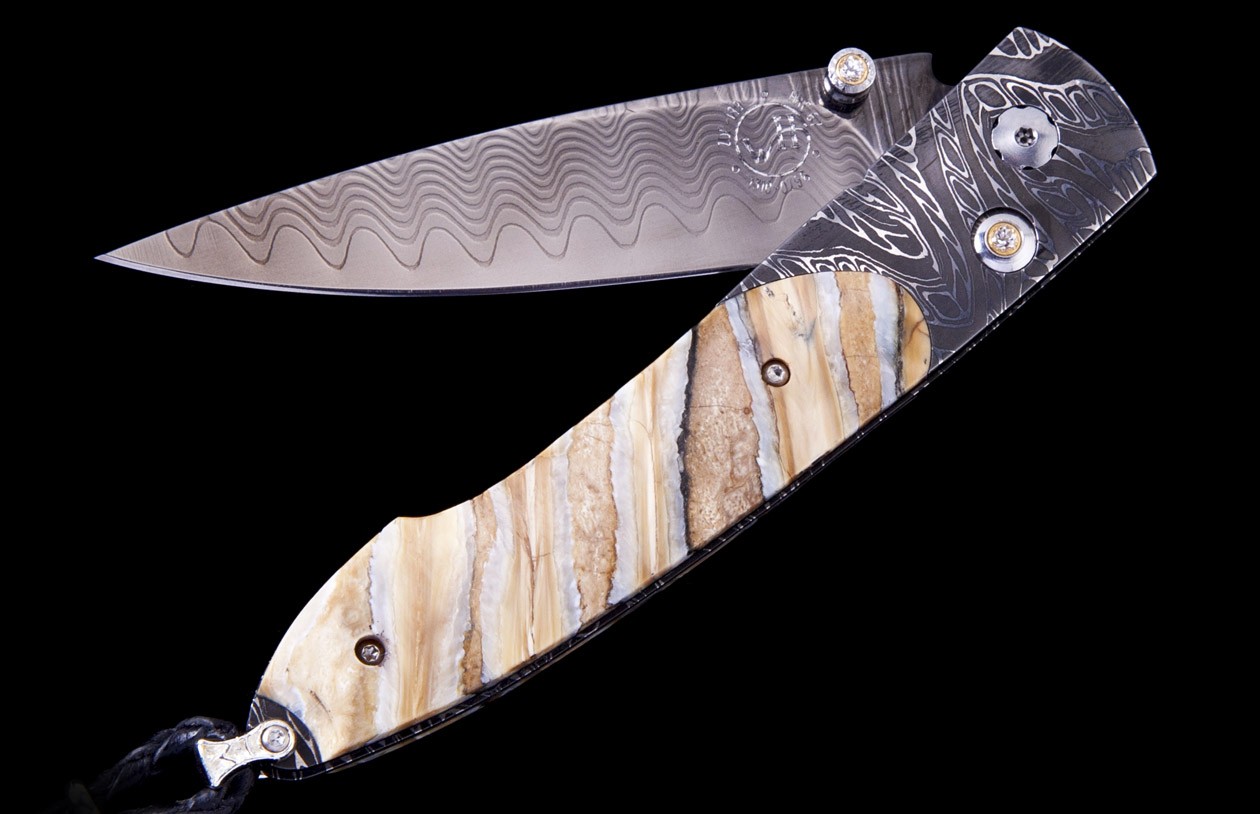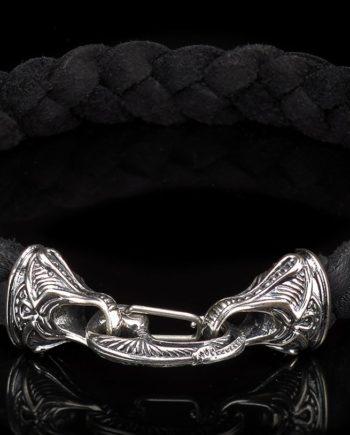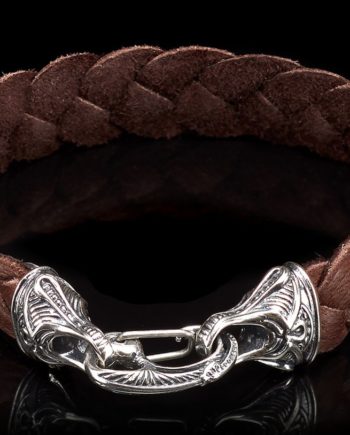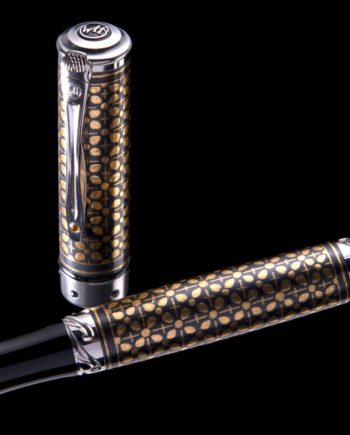Description
HAND-FORGED DAMASCUS
Damascus steel was a term used by several Western cultures from the Medieval period onward to describe a type of steel created in India and used in swordmaking from about 300 BC to 1700 AD. These swords were characterized by distinctive patterns of banding and mottling reminiscent of flowing water. Such blades were reputed to be not only tough and resistant to shattering, but capable of being honed to a sharp and resilient edge. William Henry’s damascus is made is made from several types of steel welded together to form a billet.
The patterns vary depending on how the damascus artist works the billet. The billet is drawn out and folded until the desired number of layers are formed. William Henry damascus billets are forged with a minimum of 300 layers. William Henry works with a handful of the very best damascus artists/forgers in the U.S.
ZDP-189
William Henry worked closely with partners in Japan to develop a laminate that captures a ‘core’ center layer of ZDP-189 within softer layers of 420J2 stainless steelfor our blades. The ZDP creates the razor sharp edge, while the softer layers offer tensile strength and support. The layers are revealed in heat treating and polishing, showing an elegant seam in the blade that mimics the traditional ‘temper lines’ seen on Samurai swords.
Black Coated ZDP-189
Black (Tungsten DLC coating). This is a surface coating that has a molecular bond with the ZDP blade. The coating has a hardness of about 88 HRC, even tougher than our blade steel, and wears beautifully over time and use.
FOSSIL MAMMOTH TOOTH
From a Woolly Mammoth that walked the Earth at least 10,000 years ago.
Modern humans coexisted with woolly mammoths during the Upper Paleolithic period when they entered Europe from Africa between 30,000 and 40,000 years ago. Prior to this, Neanderthals had coexisted with mammoths during the Middle Paleolithic and up to that time. Woolly mammoths were very important to Ice Age humans, and their survival may have depended on these animals in some areas.
The woolly mammoth is the next most depicted animal in Ice Age art after horses and bisons, and these images were produced up to 11,500 years ago. Today, more than five hundred depictions of woolly mammoths are known, in media ranging from carvings and cave paintings located in 46 caves in Russia, France and Spain, to sculptures and engravings made from different materials.
William Henry’s fossil Mammoth tooth is harvested in Alaska and Siberia. It is a rare and mesmerizing material, a living testimony of the dawn of Mankind.
WHITE TOPAZ
Topaz is a rare, extremely hard gemstone with an exceptionally wide color range that, besides brown, includes various tones and saturations of blue, green, yellow, orange, red, pink, and purple.
The ancient Greeks believed that topaz gave them strength. In Europe during the Renaissance (the period from the 1300s to the 1600s) people thought that topaz could break magic spells and dispel anger. For centuries, many people in India have believed that topaz worn above the heart assures long life, beauty, and intelligence.
Today, topaz is one of the US birthstones for November, while blue topaz is a birthstone for December







